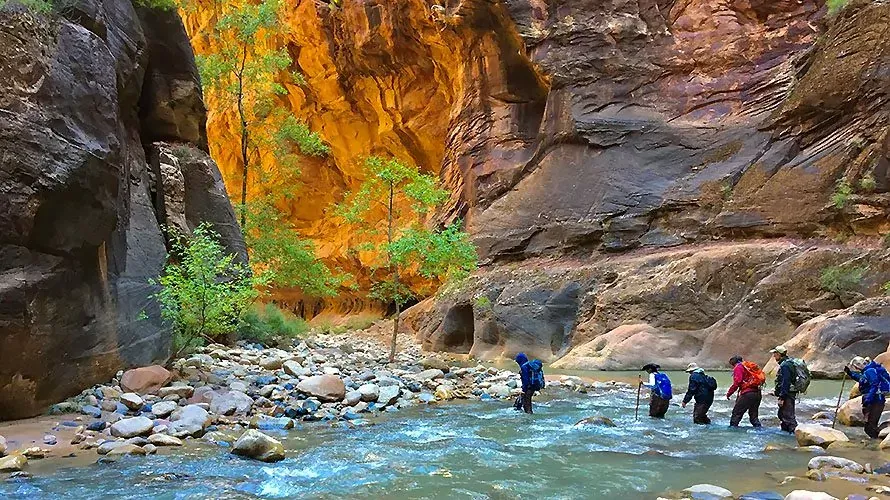If you're looking for an adventure that's truly unlike any other, then hiking the Narrows Zion National Park should be at the very top of your bucket list. I still remember the thrill of stepping into the cool Virgin River, surrounded by towering canyon walls that seemed to touch the sky. It's an experience that combines hiking, wading, and sometimes even swimming through one of the most iconic slot canyons in the world. But before you dive in (literally!), there's a lot you need to know to make your journey safe, enjoyable, and unforgettable. Let's get you ready for this incredible adventure!
Are you ready to hike the Narrows yourself?
Hiking the Narrows Zion National Park is an extraordinary experience, but it's important to be realistic about what it entails. It's not your typical trail; the path *is* the Virgin River. This means you'll be walking against the current, over slippery, uneven river rocks, with water levels that can range from ankle-deep to waist-deep, or even require swimming in certain sections. I found that the constant balancing act on the riverbed was a workout in itself, engaging muscles I didn't even know I had!
While the hike can be challenging, it's accessible to a wide range of fitness levels, especially if you're only going a few miles up from the bottom-up entry point. The key is preparation and understanding the unique demands of a river hike. You don't need to be an expert hiker, but good balance, sturdy footwear, and a willingness to get wet are essential. It's a truly immersive experience that connects you with nature in a profound way, and for me, it was worth every slippery step.
>> Read More: Where Is Zion National Park? A Detailed Travel Guide
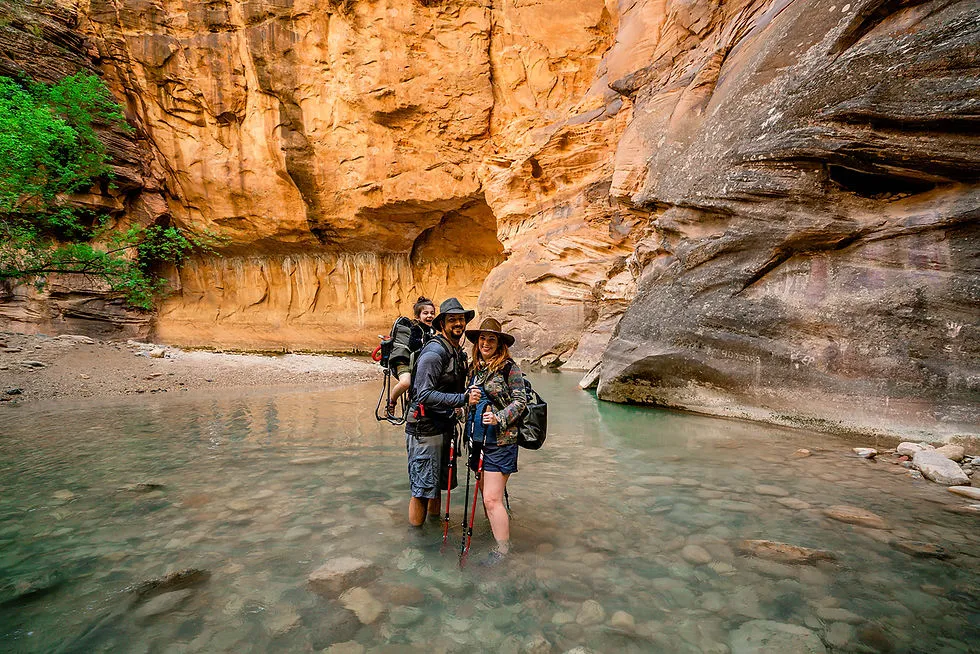
About the Zion Narrows
The Narrows Zion National Park is one of the most famous hikes in the world, and for good reason. It's the narrowest section of Zion Canyon, where the Virgin River has carved a path through Navajo sandstone, creating towering walls that can be over a thousand feet tall and, in some places, only twenty to thirty feet wide. This creates a dramatic, slot-canyon environment where sunlight struggles to reach the bottom, casting incredible shadows and illuminating the vibrant colors of the rock.
The hike can be done in two main ways: bottom-up or top-down. Most day-hikers experience the Narrows bottom-up, starting from the Temple of Sinawava (the last shuttle stop in Zion Canyon) and hiking upstream as far as they wish before turning around. This route does not require a permit for day-use up to Big Springs. The top-down hike is a much longer, 16-mile journey that typically takes 10-14 hours or can be done as an overnight backpacking trip. This route starts at Chamberlain's Ranch (outside the main canyon) and requires a wilderness permit, which is highly competitive.
What makes the Narrows Zion National Park so unique is that there's no dry trail for much of the hike. You are literally walking in the river. The terrain varies from sandy banks to rocky riverbeds, and the water depth changes constantly. It's an ever-changing landscape that keeps you on your toes and constantly amazed by the sheer scale and beauty of the canyon.
How to get the Narrows Zion National Park
Getting to the Narrows Zion National Park is part of the adventure, especially if you're doing the popular bottom-up hike. Since private vehicles are generally not allowed on the Zion Canyon Scenic Drive for most of the year, you'll rely on the efficient Zion Canyon Shuttle system.
- Start at the Visitor Center: Your journey begins at the Zion Canyon Visitor Center, located just inside the park's South Entrance in Springdale. Here, you'll park your car (arrive early, as parking fills up quickly!) and board the free park shuttle.
- Take the Shuttle to Temple of Sinawava: The shuttle will take you on a scenic ride up the canyon. The last stop, #9, is the Temple of Sinawava. This is where the Riverside Walk begins.
- Hike the Riverside Walk: From the Temple of Sinawava, you'll follow the paved Riverside Walk for about one mile. This beautiful, accessible trail follows the Virgin River, offering glimpses of the canyon walls and the river itself. It's a pleasant warm-up before you get your feet wet.
- Enter The Narrows: At the end of the Riverside Walk, the paved trail ends, and you'll see a sign indicating the start of The Narrows. This is where you step into the Virgin River and begin your upstream adventure. There are no formal trail markers beyond this point; you simply follow the river upstream. It's a straightforward process, but remember to check the shuttle schedule for your return trip, especially if you plan to hike deep into the Narrows Zion National Park. For the top-down hike, you'll need to arrange private transportation to Chamberlain's Ranch, which is a significant drive outside the main canyon.
>> Read More: How To Read a Hiking Trail Map Quickly and Easily
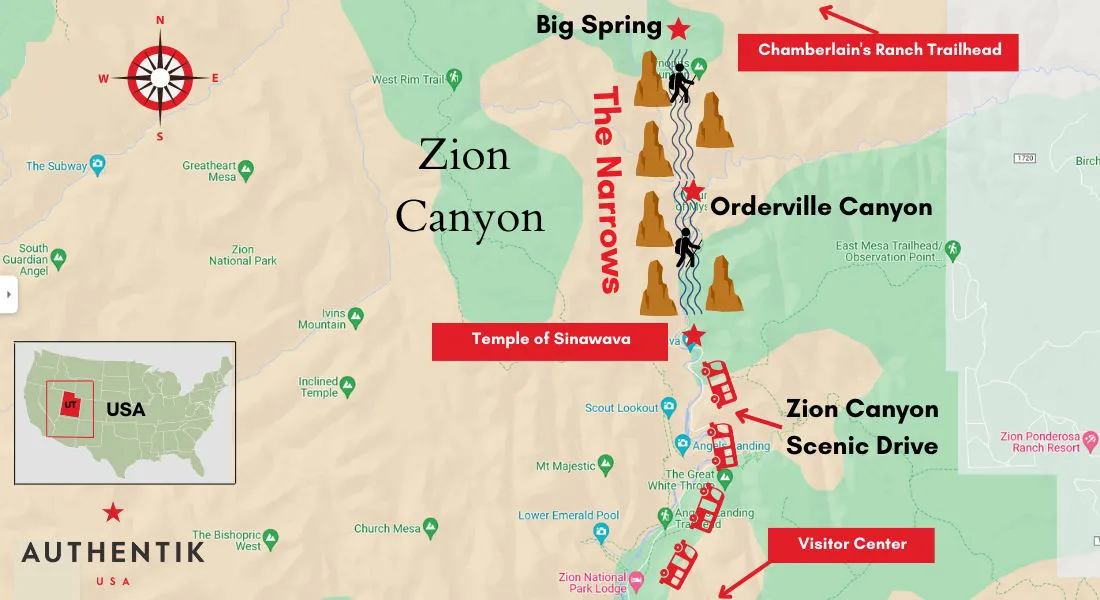
Best Time to Hike the Zion Narrows
Choosing the best time to hike the Narrows Zion National Park is paramount for both safety and enjoyment. My personal preference, and what many experienced hikers will tell you, is late spring to early summer (May to early June) or early fall (late September to October). These periods offer a sweet spot of favorable conditions.
- Late Spring to Early Summer (May - Early June): This is often considered ideal. The weather is warm and pleasant, but not yet scorching hot like mid-summer. The water levels from snowmelt are typically receding, making the river more manageable. Flash flood risk is generally lower than in late summer. The vibrant green foliage against the canyon walls is stunning.
- Early Fall (Late September - October): Another fantastic window. The summer crowds begin to thin out, and the temperatures are wonderfully mild. The risk of flash floods significantly decreases after the monsoon season, and the water levels are usually low and stable. The changing leaves in the canyon add an extra layer of beauty to the experience.
- Mid-Summer (July - Early September): While popular, this is also the most challenging time due to extreme heat and the peak of monsoon season. Flash floods are a serious and frequent danger during this period, and the Narrows can close without warning. If you must hike in summer, go very early, check the forecast meticulously, and be prepared for high temperatures and potential closures.
- Winter (November - April): Hiking in winter is possible but requires specialized gear (dry suits, neoprene socks) due to the frigid water temperatures. Ice can also be a hazard. While you'll find incredible solitude and unique snowy views, it's a much more demanding and less accessible experience for most. The Narrows often closes due to high flow rates from snowmelt in early spring.
Always, always check the current conditions and weather forecast before you head out. The Virgin River flow rate is the most critical factor, and the park service provides daily updates. This brings us to our next crucial point...
Understanding The Narrows Flow Rate Conditions
This is arguably the most important factor when planning your hike in the Narrows Zion National Park. The Virgin River is a dynamic environment, and its flow rate directly impacts safety and accessibility. I can't stress enough how vital it is to check the current conditions before you even leave your accommodation. The National Park Service (NPS) monitors the Virgin River flow rate at a gauge near the Temple of Sinawava, and these readings dictate whether the Narrows is open or closed.
Here’s a general guide to flow rates and what they mean:
- Below 70 cubic feet per second (CFS): These are generally considered ideal conditions for hiking the Narrows bottom-up. The water is typically knee-deep or less in most sections, making for moderately difficult walking over the slippery, uneven riverbed. This is when you can truly enjoy the scenery without fighting a strong current.
- 70-150 CFS: The hike becomes significantly more challenging. Water levels can be waist-deep or higher in places, and the current will be stronger. This requires more effort, better balance, and potentially specialized gear like a walking stick or canyoneering shoes. The NPS may issue warnings or recommend against hiking for inexperienced individuals.
- Above 150 CFS: The Narrows is typically closed to all hikers. This flow rate indicates dangerous conditions due to strong currents, deep water, and increased risk of flash floods. Do not attempt to hike the Narrows when it is closed.
In addition to flow rates, the NPS also closes the Narrows when the National Weather Service issues a Flash Flood Warning for the area. This can happen even if the local weather is clear, as heavy rains upstream can cause a sudden and dangerous surge of water. Always check the official Zion National Park website or stop by the Visitor Center for the most up-to-date information on closures and warnings. You can also check the USGS website for real-time Virgin River flow data. Ignoring these warnings is extremely dangerous and can be fatal. Your safety is paramount when venturing into the Narrows Zion National Park.
>> Read More: GPS vs. Map Navigation: Advantages and Disadvantages
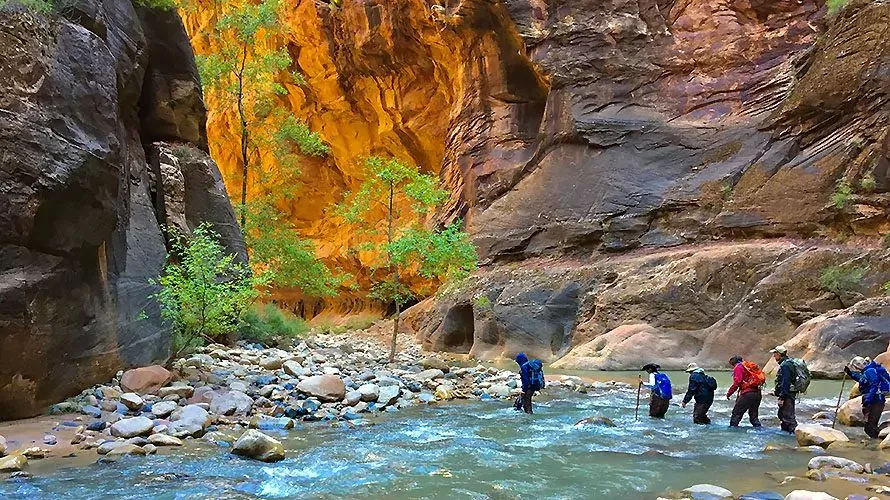
Do I need gear to hike the Narrows Zion National Park?
Absolutely! While you *can* technically walk into the Narrows Zion National Park with just your regular hiking shoes, I strongly advise against it. The right gear makes a monumental difference in your comfort, safety, and overall enjoyment. Trust me, I learned this the hard way on my first visit before I was properly equipped.
Here’s the essential gear you’ll need, and why:
- Canyoneering Shoes or Sturdy Water Shoes: This is non-negotiable. The riverbed is incredibly rocky, uneven, and often slippery due to algae. Regular hiking boots will get waterlogged and heavy, and sneakers won't provide enough grip or ankle support. Specialized canyoneering shoes (often available for rent in Springdale) are designed to drain water, offer excellent traction on wet surfaces, and protect your feet from sharp rocks. If you can't get canyoneering shoes, a very sturdy pair of water shoes with good grip and ankle support is the next best thing.
- Neoprene Socks: Even in summer, the Virgin River water is cold. Neoprene socks (wetsuit material) provide insulation and prevent blisters. They also help fill out your shoes, preventing your feet from sliding around inside them.
- Walking Stick (or two!): This is your best friend in the Narrows. A sturdy walking stick provides crucial stability and balance as you navigate the slippery, unseen rocks beneath the water. It acts as a third (or fourth) point of contact, helping you probe the depth of the water and find stable footing. I saw so many people struggle without one, and it made a huge difference for me. You can rent specialized wooden walking sticks in Springdale, or use sturdy trekking poles.
- Dry Bag or Waterproof Backpack: You *will* get wet. Protect your electronics, wallet, keys, and any other items you don't want soaked. A dry bag inserted into your backpack, or a fully waterproof backpack, is essential. Even if you don't plan on swimming, a slip and fall can happen in an instant.
- Plenty of Water and Snacks: Even though you're in water, you'll be exerting yourself and can easily become dehydrated. Carry more water than you think you'll need. High-energy snacks are also crucial to keep you fueled.
- Appropriate Clothing: Wear quick-drying, synthetic clothing. Avoid cotton, as it stays wet and can chafe. In cooler weather, consider renting a dry suit or wetsuit from one of the outfitters in Springdale. Even in summer, a light long-sleeved shirt can protect you from the sun.
- Headlamp/Flashlight (if going deep): If you plan to hike far into the Narrows, especially if you're aiming for Wall Street or beyond, the canyon gets very dark. A headlamp is a good safety item to have, even if you don't plan on being out after dark.
- First-Aid Kit: Basic first aid supplies for blisters, cuts, and scrapes are always a good idea.
Many outfitters in Springdale offer Narrows rental packages that include shoes, socks, and a walking stick. This is often the most convenient and cost-effective way to get the right gear for your adventure in the Narrows Zion National Park.
Tips for hiking in the Narrows
Hiking the Narrows Zion National Park is an incredible experience, but a little preparation and knowledge can go a long way in making it safe and enjoyable. Based on my own adventures and observations, here are some essential tips:
- Check Conditions Daily: I cannot emphasize this enough. Before you even think about stepping into the river, check the official NPS website for current flow rates and flash flood warnings. Weather upstream can affect conditions quickly. If there’s any warning, do not go.
- Start Early: Especially during peak season, getting on the first few shuttles to the Temple of Sinawava will give you a head start on the crowds. This means more solitude in the canyon and less waiting for others on narrow sections. Plus, you’ll have more time to explore.
- Rent the Right Gear: As mentioned, proper footwear (canyoneering shoes/sturdy water shoes), neoprene socks, and a walking stick are game-changers. Don’t skimp on this. Your feet and ankles will thank you.
- Protect Your Valuables: A dry bag is your best friend. Even if you don’t fall, water splashes everywhere. Keep your phone, camera, wallet, and car keys in a sealed dry bag within your backpack.
- Stay Hydrated and Fueled: Carry plenty of water and high-energy snacks. You’ll be burning a lot of calories navigating the river, and dehydration can sneak up on you, even when surrounded by water.
- Look Up, Not Down (Mostly): While you need to watch your footing, remember to look up and around! The beauty of the Narrows Zion National Park is in its towering walls, hanging gardens, and the incredible light. Take moments to pause, absorb the grandeur, and take photos.
- Be Aware of Your Surroundings: Watch for falling rocks, especially after rain. Pay attention to the water level and current. If the water starts rising or getting murky, or if you hear thunder, turn back immediately.
- Don’t Rush: This isn’t a race. The uneven riverbed means you’ll be moving slower than on a typical trail. Enjoy the journey, take breaks, and let faster groups pass if needed.
- Pack Out What You Pack In: Leave no trace. This pristine environment depends on every visitor doing their part to keep it clean. This includes all trash, food scraps, and human waste (if you’re going deep, consider a WAG bag).
- Consider a Guide (for top-down or first-timers): If you’re doing the top-down hike, a guide is highly recommended. For bottom-up, if you’re nervous or want to learn more about the geology and history, a guided tour can enhance your experience.
Following these tips will help ensure you have a safe, memorable, and truly incredible time exploring the Narrows Zion National Park.
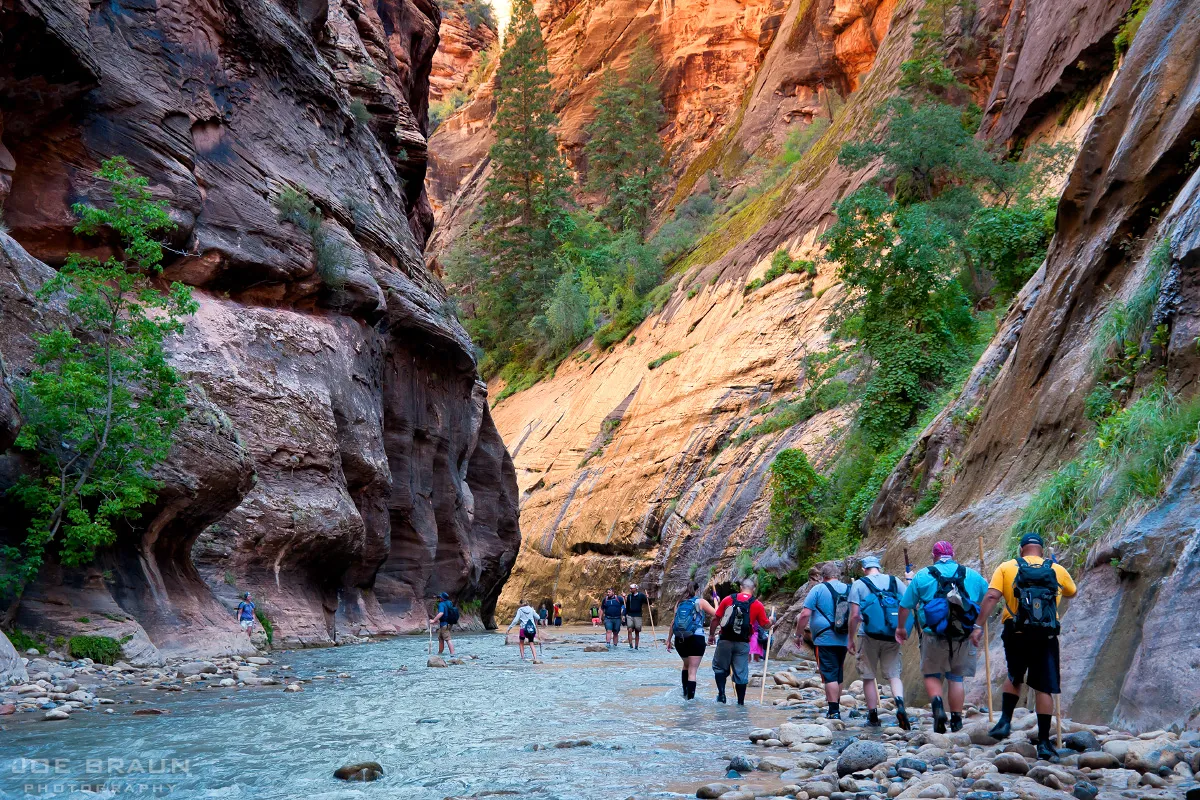
Conclusion
Hiking the Narrows Zion National Park is an unparalleled adventure that will challenge you, inspire you, and leave you with memories to last a lifetime. It’s a place where the raw power of nature is on full display, and you become an integral part of the landscape as you wade through the Virgin River. From the initial excitement of stepping into the water to the awe-inspiring views of the towering canyon walls, every moment is a testament to Zion’s unique beauty.
Remember, preparation is key to a safe and enjoyable experience. Always check the weather and flow rates, invest in the right gear, and follow the park’s guidelines. Whether you’re an experienced hiker or a curious first-timer, the Narrows Zion National Park offers an unforgettable journey into the heart of one of the world’s most magnificent slot canyons. So, get ready to get your feet wet, embrace the challenge, and immerse yourself in the breathtaking wonder of the Narrows!
>> Read More:

